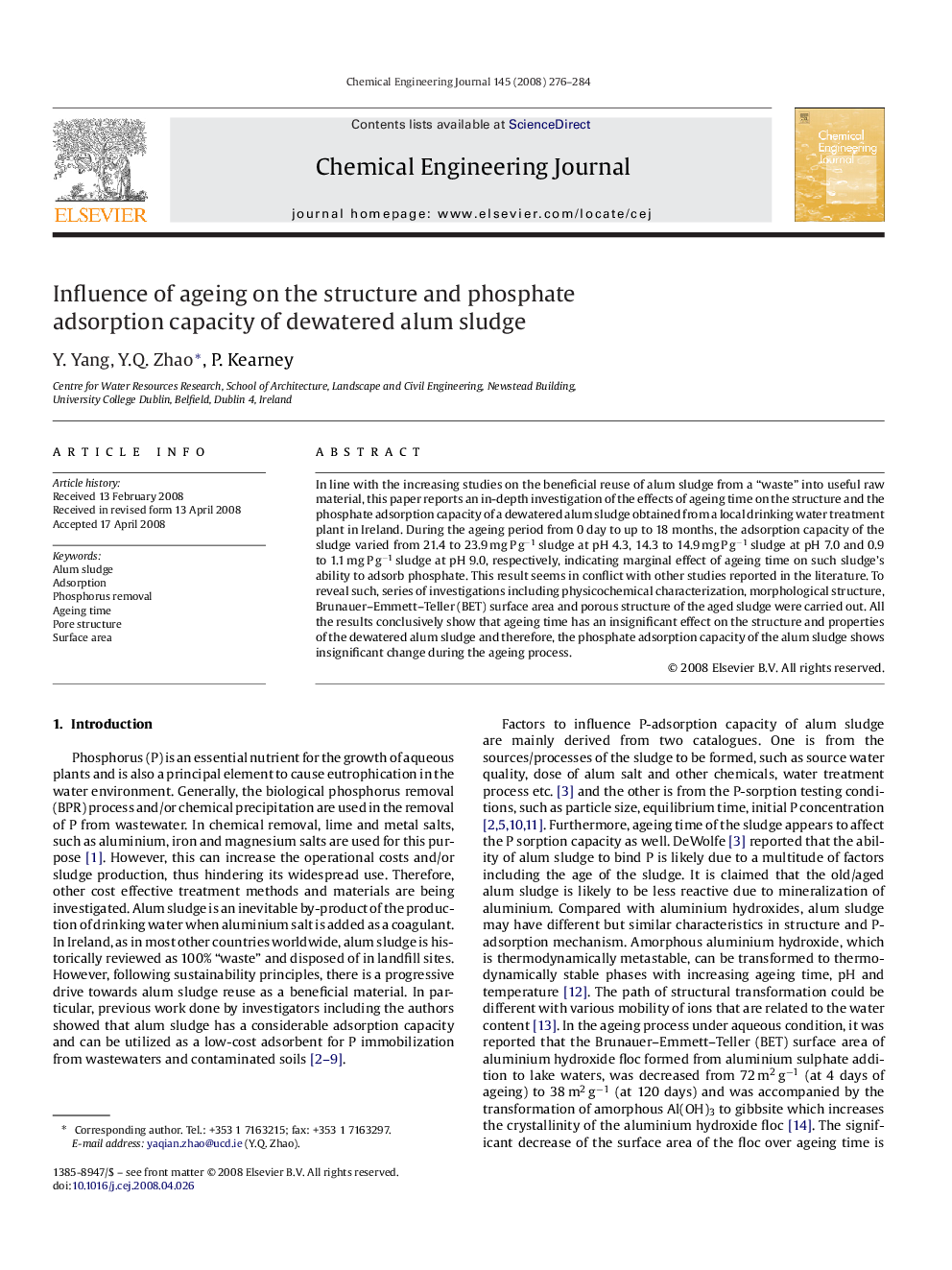| Article ID | Journal | Published Year | Pages | File Type |
|---|---|---|---|---|
| 152736 | Chemical Engineering Journal | 2008 | 9 Pages |
In line with the increasing studies on the beneficial reuse of alum sludge from a “waste” into useful raw material, this paper reports an in-depth investigation of the effects of ageing time on the structure and the phosphate adsorption capacity of a dewatered alum sludge obtained from a local drinking water treatment plant in Ireland. During the ageing period from 0 day to up to 18 months, the adsorption capacity of the sludge varied from 21.4 to 23.9 mg P g−1 sludge at pH 4.3, 14.3 to 14.9 mg P g−1 sludge at pH 7.0 and 0.9 to 1.1 mg P g−1 sludge at pH 9.0, respectively, indicating marginal effect of ageing time on such sludge's ability to adsorb phosphate. This result seems in conflict with other studies reported in the literature. To reveal such, series of investigations including physicochemical characterization, morphological structure, Brunauer–Emmett–Teller (BET) surface area and porous structure of the aged sludge were carried out. All the results conclusively show that ageing time has an insignificant effect on the structure and properties of the dewatered alum sludge and therefore, the phosphate adsorption capacity of the alum sludge shows insignificant change during the ageing process.
